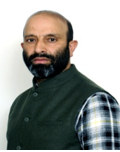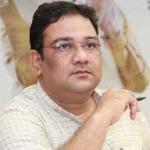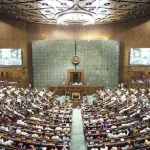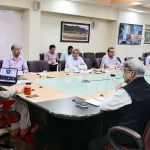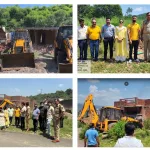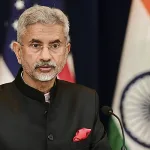Of course, the smooth functioning and massive participation in the Amarnath Yatra this year was difficult due to the recent terror attack that once again pushed Kashmir into a state of darkness. That attack shattered the hopes and expectations of common Kashmiris who are directly or indirectly associated with the Yatra.Prioritizing the Yatra, Kashmiris from children to the elderly, should wholeheartedly welcome the guests, and all stakeholders must come forward to serve them during this blessed time. It is not merely a matter of the economy or tourism revival; it is about religious diversity, brotherhood, fraternity, and the Kashmiriyat for which our land is known throughout the world.It is vital for the betterment of our identity and our long-standing belief in religious diversity and communal harmony. It is a matter of honour to send a clear message that Kashmir was, is, and will always remain a strong believer in communal goodwill and hospitality.The LG administration is on its toes to make it a success. As of now, it is going to be a historic one due to the huge participation of the Yatris. The administration, this year, no doubt to cut it short, is taking every stakeholder into confidence and seeking suggestions, which has been an appreciated move that people are hailing.
This enthusiasm of brotherhood and humanism among the Kashmiri people again proves the strength of their well-cemented belief in Kashmiriyat. This year, people associated with the Yatra were in doubt, not only fearing the loss of economic benefits but also the loss of a recognised identity of ‘Mehman-Nawazi’ (hospitality), which we hear and witness from every tourist from outside the UT. This again proves that Kashmiris are gentle and do not want violence or bloodshed, but peace and prosperity.This year, the Yatra is a turning point every Kashmiri must understand because it is going to reboot and refresh the recent scars and fear psychosis among tourists, which had a huge effect. This Yatra will overcome the threat and create an environment that is feasible, viable, and comfortable for other tourists who are eagerly waiting to visit.”Oh, Fida Sahab, my houseboat was booked up to November, and now it is empty—no one comes. My daughter says this beautiful Dal Lake doesn’t look the same without tourists. She only knows this, but she doesn’t know that her father has availed a huge loan,” said Tariq Padroo, who owns a shikara on the Dal. This concern, the Yatra can fulfil.So, it is the Yatra now that is actually opening Kashmir with peace and tourism, and strengthening the relationships between diverse sections. Kashmiris should take part in the Yatra as hosts because of their own historical legacy of participating in each other’s religious festivals, so that the post-Yatra environment will be made more conducive and comfortable. To make it more historical, I have some suggestions.The recent meetings of all the stakeholders are an appreciable step towards promoting the symbol of communal harmony in the UT. These meetings should also assist the pilgrims, and the exchange of ideas and thoughts can be discussed. This will help the world and the Yatris understand the nature of the Kashmiri people. It will also highlight the Yatra not just as a religious event but as a living embodiment of Kashmiriyat, brotherhood, and national unity. Encourage more interfaith participation, peace marches, and local cultural showcases during the Yatra.
Some decades ago, the Yatra was conducted and overseen by common people, and all the local Kashmiris were helping the Yatris. There were no facilities, no roads, no connectivity, and only a limited number of Yatris were allowed. Kashmiri locals were the only administration to assist them and served as their sole security.Community-based programs should be conducted with locals and civil societies. NGOs should be given time for the exchange of ideas, and a community-led system should be encouraged, as this is a pilgrimage and requires a civil movement. Recognize and support local efforts especially by Kashmiri Muslims who serve Yatris through langars, shelters, and medical booths. Incentivize civil society groups to continue these goodwill gestures, turning them into annual traditions.The Yatris should not be restricted to the pilgrimage site only; they should be allowed to visit other places in Kashmir. It would be very positive if we could turn their Yatra into a tourist-cum-religious pilgrimage. This will make the environment more comfortable and convenient for others to come to the valley.Religious groups, intellectuals, and social activists should be allowed to have interactive sessions with a minimum number of Yatris in a separate event, either before the Yatra or after it. In this event, discussions on various topics will help both communities to establish a positive message and foster a positive environment.Making this year’s Yatra more beautiful and smoother, after proper security checks, local people should be given the chance to visit all the tourist places. No doubt, the recent opening of some tourist spots is a welcoming step, but keeping Yatris under restrictions is sending a negative message. If possible, let us give them a free environment to make it healthier and more conducive.In Kashmir, we must have a collective platform for all the stakeholders, so that in times of emergencies or for addressing any strategies or situations, we can develop useful plans and a common approach. This will actually build a shared platform and promote collective responsibility among all the stakeholders.To make all these religious functions more secular, communal, and liberal, a common religious platform representing all religions in the UT must be established at the government level, comprising people from all walks of life.These social issues cannot be addressed solely through political means; they require a social structure that cannot be ignored but rather enforced as a standard platform for all faiths and stakeholders.These are some of the suggestions that a common person like me feels responsible to share for building a longer-lasting, concrete, and prosperous society.
(Author is a columnist and can be reached at: [email protected])


